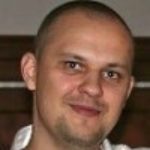Link to Pubmed [PMID] – 15703412
J. Neurosci. 2005 Feb;25(6):1579-87
What is mapped on the surface of the primary motor cortex (M1)? The classic somatotopic map holds true on the level of limb representations. However, on the small scale (at within-limb representations), neither somatotopy nor movement dynamics/kinematics seem to be organizational principles. We investigated the hypothesis that integrated into the body representation of M1 there may be separate representation of different modes of motor control, using different subcortical computations but sharing the same motor periphery. Using awake rats and long intracortical stimulation trains in M1 whisker representation (wM1) revealed that natural-like, rhythmic whisking (normally used for tactile exploration) can be evoked from a posteromedial subregion of wM1. Nonrhythmic whisker retraction, on the other hand, was evoked in an adjacent but more anterolaterally located region within wM1. Evoked whisker retraction was always accompanied by complex movements of the face, suggesting that the respective subregion is able to interact with other representations in specific behavioral contexts. Such associations were absent for evoked rhythmic whisking. The respective subregion rather seemed to activate a downstream central pattern generator, the oscillation frequency of which was dependent on the average evoked cortical activity. Nevertheless, joint stimulation of the two neighboring subregions demonstrated their potency to interact in a functionally useful way. Therefore, we suggest that the cause of cortical separation is the specific drive of subcortical structures needed to generate different types of movements rather than different behavioral contexts in which the movements are performed.

